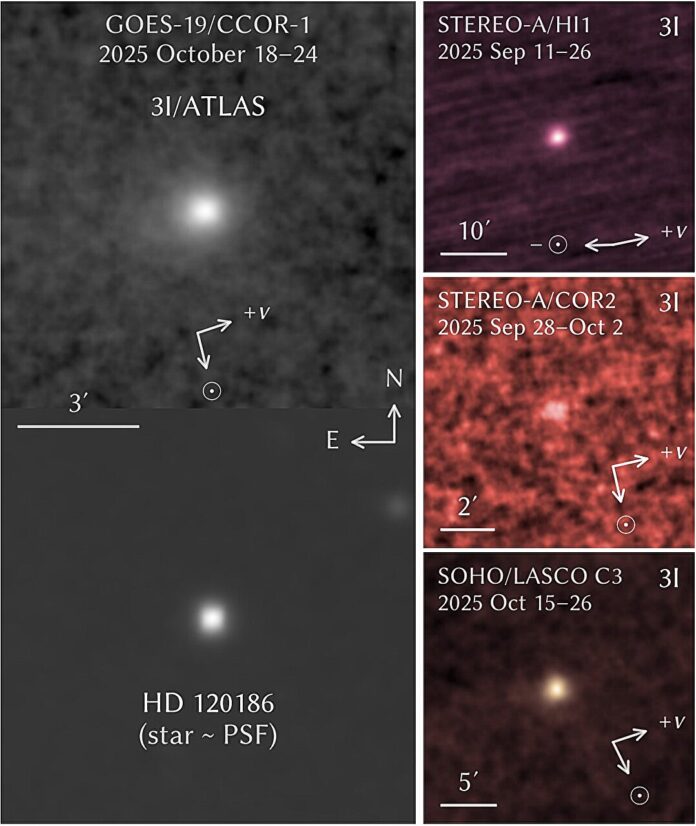
By Samuel Lopez | USA Herald
WASHINGTON, DC — Among the many intriguing traits of 3I/ATLAS, one of the least-reported but scientifically significant findings is its unique polarimetric behavior—observations that may hint at surface or structural properties unlike those of typical solar system comets.
Here’s what the data tell us: Astronomers obtained polarimetric measurements of 3I/ATLAS using instruments such as FORS2 on the Very Large Telescope (VLT) and ALFOSC/NOT. The results show a deep and narrow negative polarization branch reaching a minimum of about –2.7 % at a phase angle of ~7°, with an inversion angle around 17°. arXiv
In simpler terms: when sunlight reflects off the object at small angles, the way light is scattered and polarized is unlike most known comets or asteroids. The negative polarization values and the inversion angle are more akin to certain trans-Neptunian objects or Centaurs than classical comets. arXiv
Why this matters:
- Polarization measurements provide a clue about the texture, composition, and possibly the structure of the surface (or near-surface) material—whether it’s dust, ice grains, smooth or rough, compact or fluffy.
- The fact that 3I/ATLAS shows a polarimetric signature outside the typical range for solar-system comets suggests either an unusual surface layer or a different evolutionary path.
- Because 3I/ATLAS is an interstellar visitor—only the third such object well-observed in our solar system—the polarimetry adds a new dimension to how we compare it with the two prior travelers (1I/ʻOumuamua and 2I/Borisov) and with ordinary comets.
Additional context:
The object was discovered on July 1, 2025 by the ATLAS survey telescope in Chile. NASA Science It follows a hyperbolic trajectory, confirming it came from beyond the Sun’s gravitational bound region.
Yet the polarimetric data show that—despite its comet-like behavior, some observations such as the surface scattering properties are markedly different. According to the academic paper: “These findings may demonstrate that 3I represents a distinct type of comet, expanding the diversity of known interstellar bodies.” arXiv
What remains open:


